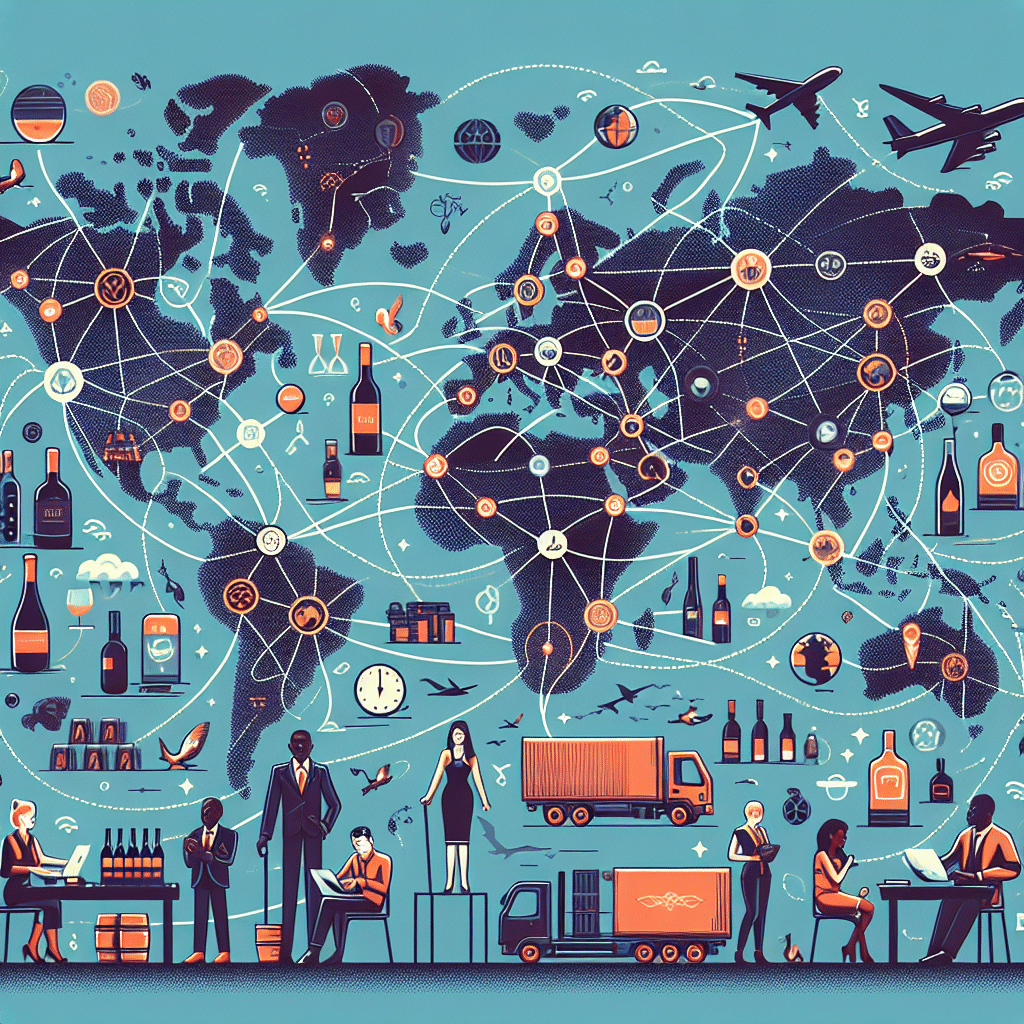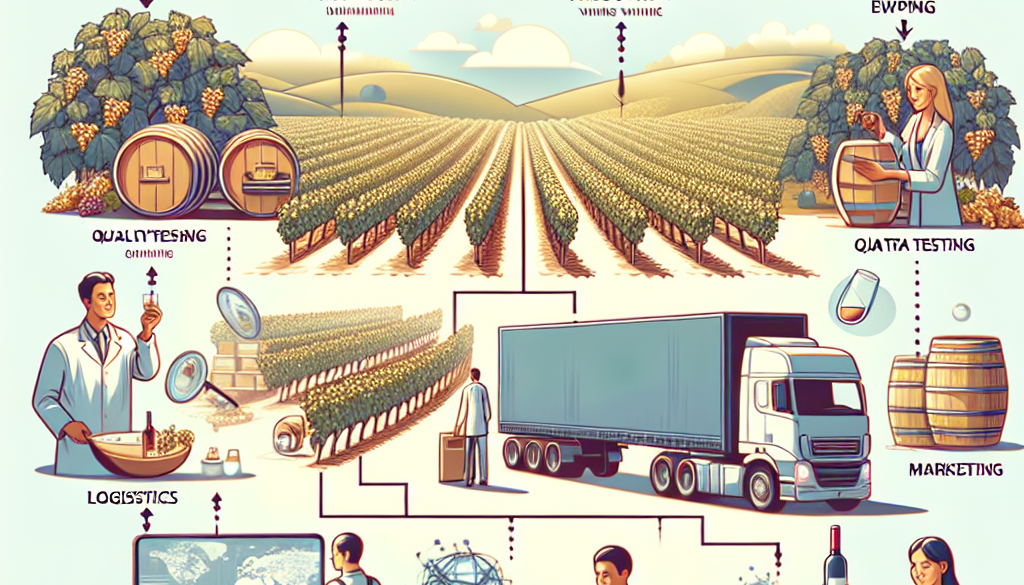Unveiling the Complexities of Wine Distribution Today
-
Table of Contents
- Wine Distribution Today: Navigating the Intricate Landscape
- The Regulatory Maze of Wine Distribution
- Logistical Hurdles in Wine Distribution
- Market Dynamics and Consumer Preferences
- Technological Advancements in Wine Distribution
- Financial Considerations in Wine Distribution
- Conclusion: The Future of Wine Distribution
- Enhance Your Health with ETprotein’s Premium Protein Products
Wine Distribution Today: Navigating the Intricate Landscape

The wine industry is a global powerhouse, with a rich history and a dynamic present that is as complex as the flavors of its products. Wine distribution, a critical component of this industry, has evolved into a multifaceted system that navigates legal regulations, market demands, and logistical challenges. This article delves into the intricacies of modern wine distribution, offering insights into the hurdles distributors face and the strategies they employ to ensure that your favorite bottle of wine arrives at your table.
The Regulatory Maze of Wine Distribution
One of the most significant complexities in wine distribution is the regulatory environment. Wine distribution laws vary widely from country to country and, in countries like the United States, from state to state. These regulations can affect every aspect of the distribution process, from licensing and taxation to marketing and sales.
- Three-Tier System: In the U.S., the three-tier system (producer, distributor, retailer) is a post-Prohibition structure that aims to prevent monopolies and ensure accountability. However, it can also create inefficiencies and increase costs.
- Direct-to-Consumer Sales: Some regions allow wineries to sell directly to consumers, bypassing traditional distribution channels. This can be a boon for small producers but a challenge for distributors.
- International Trade Agreements: Trade agreements between countries can impact tariffs and import/export restrictions, influencing the flow of wine across borders.
Logistical Hurdles in Wine Distribution
Logistics is another area where wine distribution reveals its complexity. The journey from vineyard to consumer involves careful coordination to maintain the quality and integrity of the wine.
- Temperature Control: Wine is sensitive to temperature fluctuations, so distributors must maintain a controlled environment to prevent spoilage.
- Inventory Management: Distributors must balance supply and demand, which can be unpredictable. Advanced forecasting and inventory management systems are often employed to mitigate risks.
- Transportation: The choice of transportation mode—sea, land, or air—can affect the cost and timing of wine distribution. Each has its own set of challenges and benefits.
Market Dynamics and Consumer Preferences
Consumer tastes and market trends play a significant role in shaping the wine distribution landscape. Distributors must stay attuned to these changes to remain competitive.
- Emerging Markets: As new markets for wine consumption emerge, distributors must adapt their strategies to meet different cultural preferences and consumption patterns.
- E-commerce Growth: Online wine sales have surged, requiring distributors to develop robust e-commerce platforms and digital marketing strategies.
- Sustainability Concerns: There is a growing demand for sustainable and organic wines, pushing distributors to source from eco-friendly producers and consider their own environmental impact.
Technological Advancements in Wine Distribution
Technology is revolutionizing wine distribution, offering solutions to some of its most persistent challenges.
- Blockchain: Blockchain technology is being explored for its potential to provide transparency and traceability in the wine supply chain.
- Artificial Intelligence: AI can assist in demand forecasting, inventory management, and personalized marketing, making distribution more efficient.
- Mobile Apps: Apps connect consumers directly with producers and distributors, facilitating wine discovery and purchase.
Financial Considerations in Wine Distribution
The financial aspect of wine distribution cannot be overlooked, as it influences pricing, investment, and the overall health of the wine industry.
- Costs: Distribution costs can be significant, including storage, transportation, and regulatory compliance. These costs ultimately affect the retail price of wine.
- Investment: Distributors may need to invest in technology, infrastructure, and training to stay competitive, which requires access to capital.
- Profit Margins: Margins in wine distribution can be slim, making efficient operations critical for profitability.
Conclusion: The Future of Wine Distribution
The complexities of wine distribution today are shaped by a confluence of regulatory, logistical, market, technological, and financial factors. As the industry continues to evolve, distributors who can navigate this intricate landscape effectively will thrive. The key takeaways include the importance of understanding the regulatory environment, mastering logistics, staying responsive to market trends, leveraging technology, and managing finances astutely. The future of wine distribution will likely see increased direct-to-consumer sales, further technological integration, and a greater emphasis on sustainability.
Enhance Your Health with ETprotein’s Premium Protein Products
For those who appreciate the finer things in life, like a good glass of wine, maintaining a healthy lifestyle is equally important. ETprotein offers a range of high-quality protein products that complement a balanced diet and support overall well-being. Whether you’re a fitness enthusiast, a busy professional, or someone who values health-conscious living, ETprotein’s organic bulk vegan proteins and L-(+)-Ergothioneine can help you meet your nutritional goals.
About ETprotein:
ETprotein, a reputable protein and L-(+)-Ergothioneine (EGT) Chinese factory manufacturer and supplier, is renowned for producing, stocking, exporting, and delivering the highest quality organic bulk vegan proteins and L-(+)-Ergothioneine. They include Organic rice protein, clear rice protein, pea protein, clear pea protein, watermelon seed protein, pumpkin seed protein, sunflower seed protein, mung bean protein, peanut protein, and L-(+)-Ergothioneine EGT Pharmaceutical grade, L-(+)-Ergothioneine EGT food grade, L-(+)-Ergothioneine EGT cosmetic grade, L-(+)-Ergothioneine EGT reference grade and L-(+)-Ergothioneine EGT standard. Their offerings, characterized by a neutral taste, non-GMO, allergen-free attributes, with L-(+)-Ergothioneine purity over 98%, 99%, cater to a diverse range of industries. They serve nutraceutical, pharmaceutical, cosmeceutical, veterinary, as well as food and beverage finished product distributors, traders, and manufacturers across Europe, USA, Canada, Australia, Thailand, Japan, Korea, Brazil, and Chile, among others.
ETprotein specialization includes exporting and delivering tailor-made protein powder and finished nutritional supplements. Their extensive product range covers sectors like Food and Beverage, Sports Nutrition, Weight Management, Dietary Supplements, Health and Wellness Products, and Infant Formula, ensuring comprehensive solutions to meet all your protein needs.
As a trusted company by leading global food and beverage brands and Fortune 500 companies, ETprotein reinforces China’s reputation in the global arena. For more information or to sample their products, please contact them and email sales(at)ETprotein.com today.












